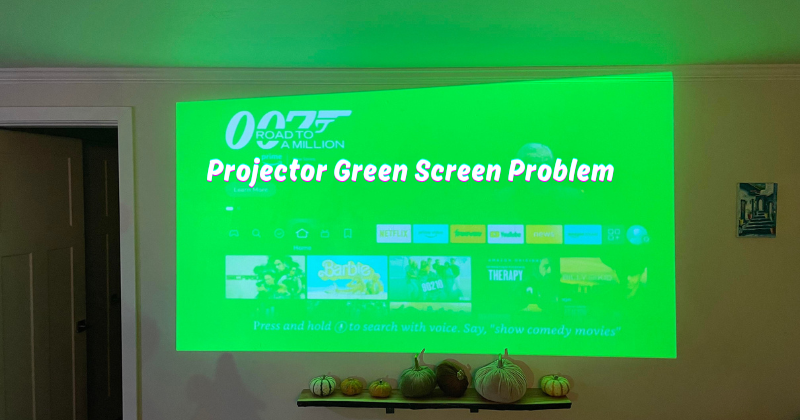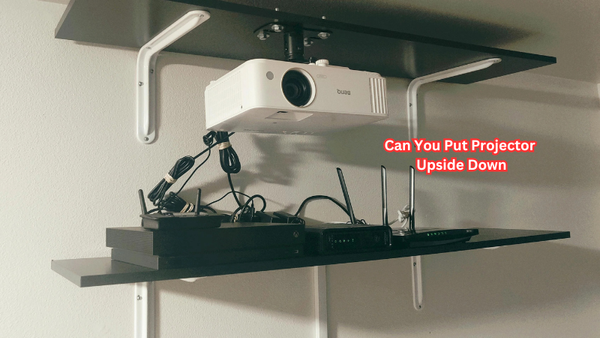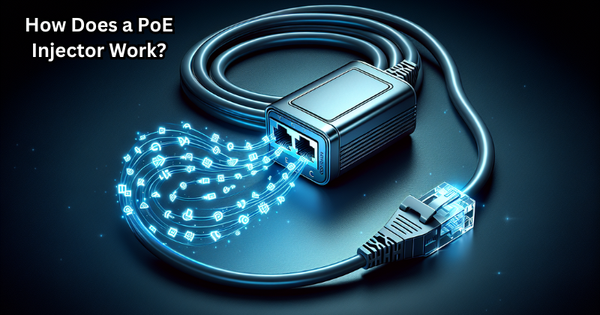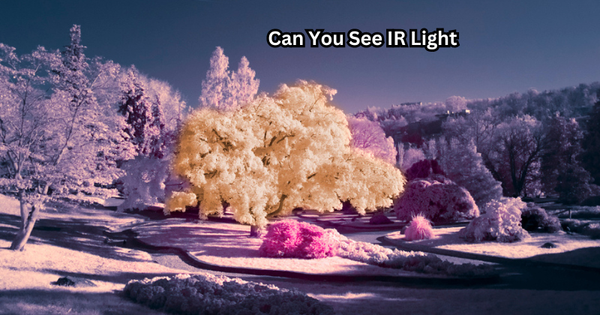Are you tired of dealing with the frustrating green screen problem while using a projector? Don't worry, you're not alone.
Many people encounter this issue, which can be annoying and disruptive to presentations or movie nights. A green screen occurs when the projected image appears with a green tint or hue, making it difficult to see the content. However, understanding the root cause of this problem is the first step towards finding a solution.
This article will explore the factors contributing to the green screen issue and provide helpful tips and techniques to overcome it. Say goodbye to the green screen annoyance and enjoy seamless projection experiences with our expert guidance. So, let's get started.
Why is My Projector Green?
Before fixing the green screen problem, it's essential to understand why it happens in the first place. This occurs for various reasons, such as faulty cables, incorrect settings, or even a defective projector. One of the primary causes is an uncalibrated projector color profile.
Projector color profiles are responsible for projecting accurate and vibrant colors on the screen. However, if the color profile is not calibrated correctly, it can result in a greenish tint on the projected image. Green tint issues occurs when red is not correctly reproduced, causing an imbalance in the colors. It could also be due to a damaged or dirty projector lens, which can distort the projected image.
Another key factor that contributes to the green screen problem is the room lighting. Too many ambient lights in the room where the projector is being used can interfere with the projected image's color accuracy. Projectors work by reflecting light onto a screen, and any external light source can affect the colors. Next, we discuss factors that can help solve this issue.
Projector Green Screen Problem: Causes and Solutions
First, understand the causes and then fix the green screen problem. Here are some common causes of the projector green screen issue and their respective solutions:
Check Your Cables and Connections:
If you are experiencing a green screen while using a projector, the first thing to check is your cables and connections. Sometimes, the problem can be as simple as a loose or damaged cable. Projector's user manual to ensure the correct connections are made. When portable projectors are used, make sure the HDMI cable is plugged in correctly.
Solution:
Ensure that all cables are securely connected to the projector and device. If any cables are damaged, replace them with new ones. VGA cable is a common culprit for the green color screen issue, so try swapping it with an HDMI or DVI cable if possible.
Adjust Color Settings:
Another cause of the green screen problem is incorrect color balance settings on the projector. If your projector has color adjustment options, check and adjust them accordingly. You can do this by accessing the projector's menu and selecting the color settings option.
Solution:
Experiment with different color settings until you find one that produces the most accurate colors. You can also try resetting the projector to its default settings and calibrating it again.
Replace Color Wheel:
If your projector has a color wheel, it could be the reason behind the green tint on your projected image. A damaged or malfunctioning color wheel can cause color imbalances, resulting in the green screen issue. The DLP projector's color wheel can be replaced, but it's best to seek professional help. LCD and DLP projectors without a color wheel may have a faulty LCD panel.
Solution:
If you suspect the color wheel is causing the green screen problem, contact a technician to replace it. You can also refer to your projector's user manual for replacing the color wheel. LCD panels can also be replaced, but it's recommended that you seek professional assistance.
Incoming Signal Setting:
The incoming signal setting on a projector determines how it processes the input signal. If this setting is set to the wrong format, it can result in color distortions, including the green screen issue.
Solution:
Check and adjust the incoming signal setting on your projector according to the input source. For example, if your projector receives an HDMI signal, the incoming signal setting should be set to HDMI.
Control Room Lighting:
As mentioned earlier, room lighting can also affect the color accuracy of a projected image. While you may not have control over external light sources, you can minimize their impact by using curtains or blinds to block excess light.
Solution:
If possible, use projectors in rooms with controlled lighting, such as a conference room or home theater. This will greatly reduce the chances of external lights interfering with the projected image's colors.
Fixing Green Tint In LCD And DLP Projectors
The green screen problem is not limited to just one type of projector. LCD and DLP projectors can face this issue, but the solutions may differ slightly. Both got discolored due to overheat.
Here are some fixing steps which will help you overcome the green tint in LCD and DLP Projectors:
Proper Maintenance:
Regularly clean the projector lens and make sure it doesn't have any damage. Also, check for dust buildup in the air filter and regularly replace or clean it as needed.
Proper Cooling:
Overheating can cause color distortions in projectors, including a green tint. Make sure to place the projector in a well-ventilated area and avoid placing it near other heat sources. Additionally, you can use a fan to help with cooling.
Use High-Quality Cables:
High-quality cables can greatly reduce the chance of experiencing the green screen problem. Make sure to invest in good-quality cables for optimal performance and longevity.
Calibrate Projector Regularly:
Regular calibration of projector color settings is essential to maintain accurate color reproduction. Calibrate the projector at least once a month or as needed.
Check Input Signal Settings:
As mentioned before, incorrect input signal settings can cause color distortions. Double-check the incoming signal setting on your projector and adjust it accordingly. Plus, make sure the input source is set to the correct format.
Consider Color Wheel Replacement:
If your projector has a color wheel and cleaning it doesn't solve the green screen issue, consider replacing it with a new one. Make sure to consult a professional technician for this task.
By understanding the causes of the green projector screen problem and following these solutions, you can effectively fix this issue in your projector and continue enjoying clear and accurate image projections. Regularly maintain and calibrate your projector to ensure optimal performance and longevity.
Additional Tips for Projector Maintenance:
- Keep the projector in a dust-free environment to prevent dust buildup on the lens and other internal components.
- Avoid moving the projector frequently, as it can cause damage to internal components.
- Use a surge protector to protect your projector from power surges that could damage its components.
- Regularly update your projector's firmware to ensure it functions at its best.
- If you notice any unusual colors or distortions in your projected image, try troubleshooting the issue before assuming it's a problem with the projector itself.
With proper maintenance and care, you can keep your projector in good working condition for years to come. So, make sure to follow these tips and solutions to fix the green screen problem and maintain optimal performance from your projector.
FAQs
Why is my projector screen flashing green?
This could be due to a faulty color wheel, incorrect input signal settings, or other external factors such as room lighting or dust buildup. Green projector screens can also be fixed by adjusting the color settings and calibrating the projector.
What are the green spots on my projector screen?
Green spots on a projector screen can also be caused by dust buildup or a faulty color wheel. It's important to clean and maintain your projector regularly to prevent these issues.
How often should I calibrate my projector?
It is recommended to calibrate your projector at least once a month or as needed, depending on usage and environmental factors. Regular calibration helps maintain accurate color reproduction and prevents issues like the green screen problem. However, make sure to consult your projector's user manual for specific recommendations and guidelines.
How do I fix my green screen reflection?
To fix green screen reflection, you can try adjusting the room lighting, cleaning the projector lens and color wheel, and checking input signal settings. If none of these solutions work, it may be necessary to replace the color wheel or seek professional assistance.
Conclusion
In conclusion, the green screen problem can be frustrating when using a projector. However, with the right understanding and techniques, this problem can be overcome. You can troubleshoot and resolve the green screen issue by identifying the root causes, such as faulty cables or incorrect settings.
Investing in high-quality cables, ensuring proper connections, and adjusting the projector settings can significantly improve the image quality and eliminate the green tint. It's also important to consider the surrounding environment, such as ambient lighting, as it can impact the projection quality.
By following the tips and techniques outlined in this guide, you can enjoy seamless projection experiences without the annoyance of the green screen problem. So, prepare to enhance your presentations, movie nights, or any other projector usage with crystal-clear images and vibrant colors.





